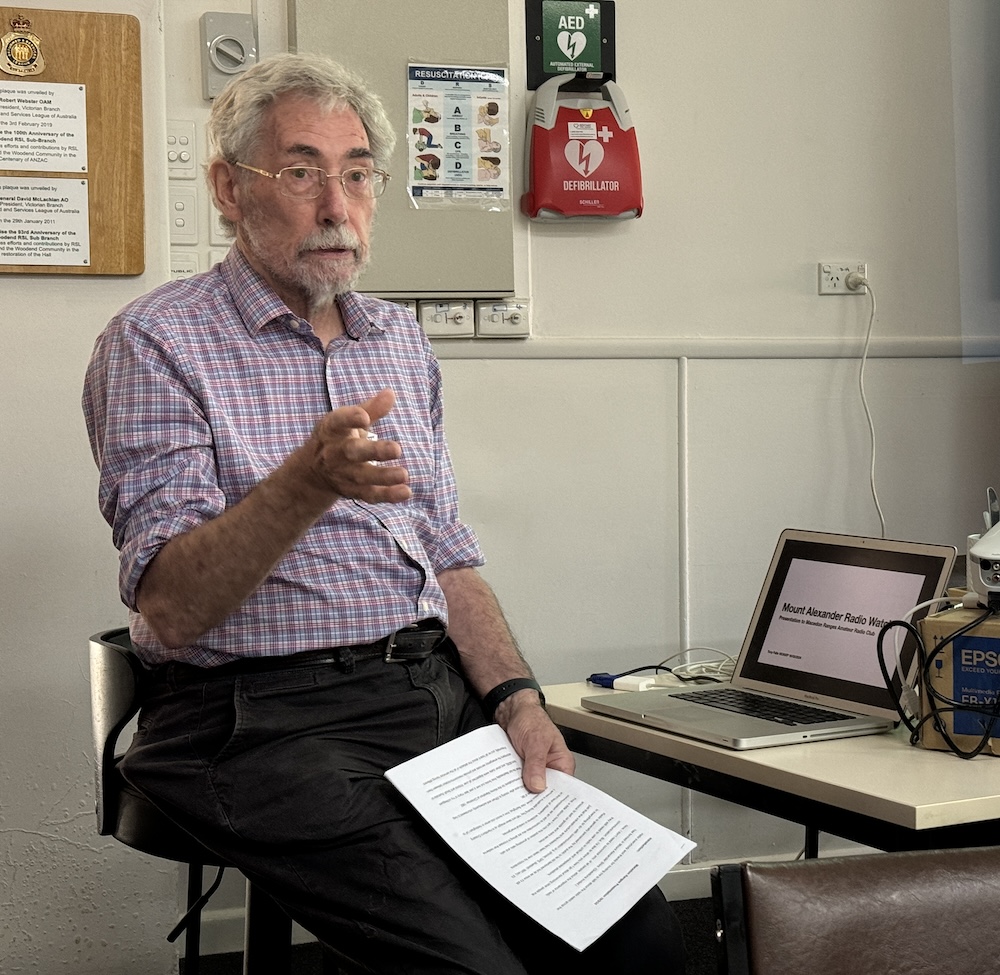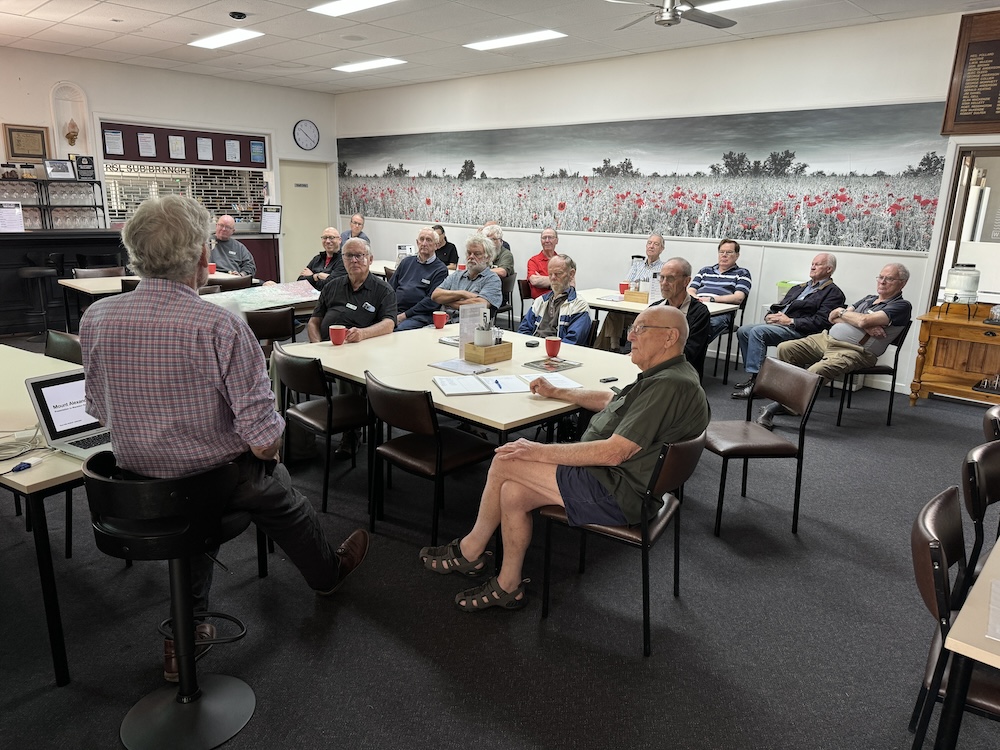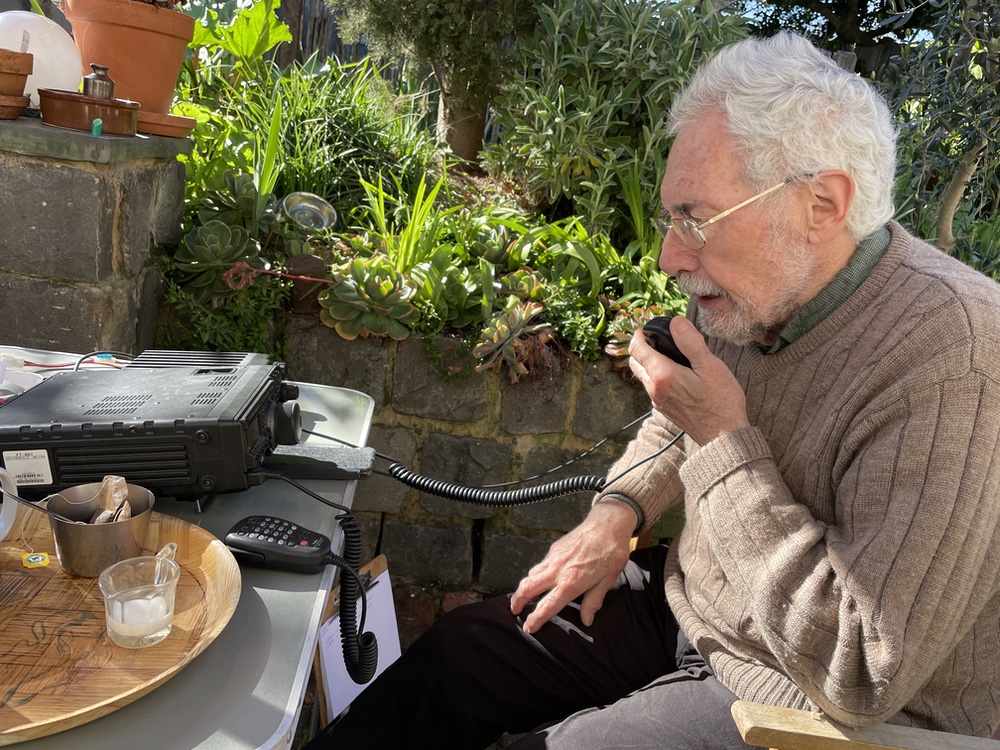At the club meeting in Woodend, our guest speaker was Tony Falla, VK3KPP from our sister club BAREC who talked about his experiences in providing backup communications that can be used during emergencies.
Tony talked about how quickly the communications we rely on, primarily mobile phones, can stop working in times of stress. Reasons include power outages that exceed the backup batteries, destruction of cell towers, or even the network overload due to people calling for welfare checks of those in the disaster area.
By providing an ad-hoc network of alternative communications, be it CB radio or Amateur radio, the load on the cellular network can be reduces by the passing of welfare messages through another network.
BAREC ran an exercise recently where messages were passed by portable stations operating off grid to practice and illustrate how such a network can operate.
Tony has formed an impromptu group called the Mount Alexander Radio Watch. Amateur radio operators know the importance of radio but what they may not appreciate is how valuable it can be to their community.
Tony has become involved in helping communities which are interested in increasing their resilience. He’s met quite a few organisations which were set up, perhaps as a result of the recent pandemic, who now want to look after themselves in case of other emergencies such as fires, floods, medical emergencies and accidents.
Arriving in Australia on Boxing Day, 1981, Tony went to Hamilton’s Crossing, which is a camping site on the Loddon River near Baringup. It was sub-zero when he left the UK and it was 38C when he arrived. Completely unaware of risks like bush fires, Tony joined the North East Radio Group, “NERGs”, and subsequently volunteered to provide communications for the Murray marathon at Christmas 1982.
In those days there were no mobile phones, it was all HF and VHF which suited him just fine.
When the Ash Wednesday fires broke out about a year later, many of the members of NERGs were called up to travel through Victoria and South Australia to accompany the emergency services and provide communications between them. There was a debacle about the emergency services at the time being unable to communicate with each other due to them using different radio frequencies. Tony’s colleagues were stationed next to SES or Police and passed messages on their behalf.
Through his work at Latrobe University, Tony went on a video job to Maningrida in Arnhem Land, Northern Territory. This was a fabulous opportunity to see another side of Australia. He travelled widely filming Aboriginal artists painting in outstations. They carried a radio with them at all times tuned in to VJY Darwin and could be used for making simplex reverse charged phone calls to the UK. You had to say “over” and the person at the exchange would flip the switch. There were also frequencies for the flying doctor service and it was a social radio for the outstations. They all had a radio sitting on a table blaring out – if anyone heard anything interesting they would start chatting.
Unfortunately, Telstra stepped in and sold expensive mobile plans to the indigenous population – they were later heavily fined for this action.
Some years later Tony was at the Nariel Creek, near Corryong, Folk Camp, when he heard a call for help on a NSW repeater. A car had slid off a mountain road and was hanging off a cliff. Two passengers had got out of the car and were holding it on the edge by an open door. Tony responded and called the SES.
Tony is not a luddite and in fact was one of the first people to run his own website hosted on a Mac SE. At the time there were about 3,000 websites in the world and his was one of them. He was also an early adopter of mobile car phones. Purchased from K-Mart for $300. This “mobile” phone was used as the home phone off grid.
Moving to Castlemaine, Tony became self employed and got work training older people to use phones and iPads. They had used computers for data entry but now wanted to use devices for communication.
The major event that convinced Tony that communities need to take responsibility for their own safety was when he was invited by the mayor of the Mount Alexander Shire to present to the emergency committee. All the members thought what he said made sense but despite enthusiasm, nothing happened.
An event that really sticks out was the crush at the Falls Festival where there was a panic, fences came down, security had CB radios, phones stopped working because so many people had heard about the problems and were calling in to find out if friends were OK.
The Mallacoota fire evacuation, was particularly horrifying. People were on the beach, not knowing what was going on, if boats were coming. The Lismore floods were nasty too.
BAREC, Tony’s club, has been experimenting with preparedness. Tony is looking after the Castlemaine area. The focus is on passing on health and welfare messages to take the load off other communication systems.
The Bendigo club, after a lot of testing, has confirmed that they can all get in to the 2m repeater and most areas simplex.
The operation was called RADAR = Rapid Deployment of Amateur Radio. Tony operated from his back yard off grid with solar and battery power.
Many groups already have independent communications: truckies, tradies, security, four wheel drive enthusiasts, even astronauts all use radios outside of official emergency systems.
Tony ran through a number of recent events where community based communications were used to good effect. During the Mallacoota fires, when people were sheltering on the beach, someone used a CB radio to report to the ABC. Sally Flannery was rescued from a roof during the Lismore floods and went on to coordinate rescue efforts to help people stranded like she was.




